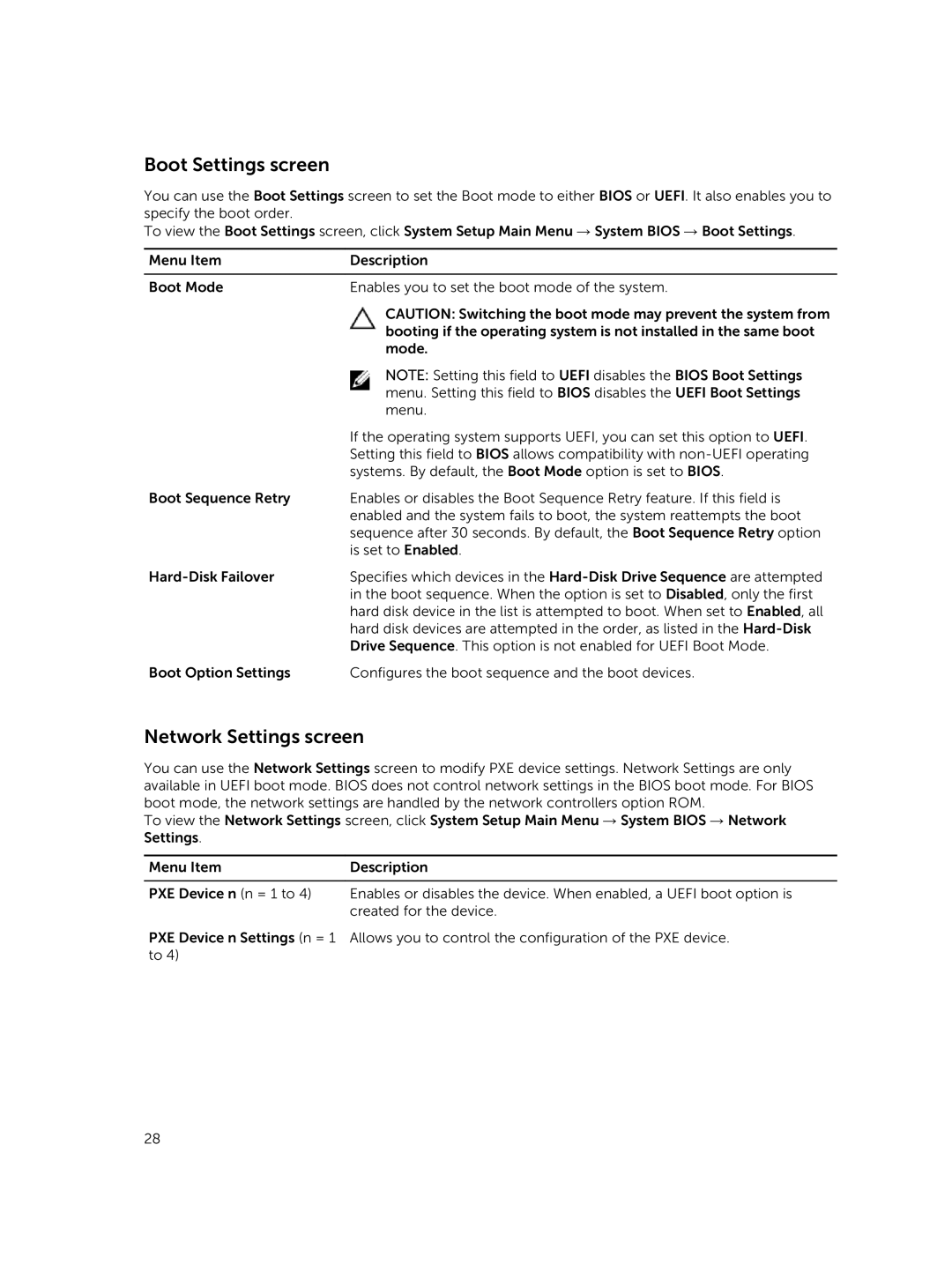
Boot Settings screen
You can use the Boot Settings screen to set the Boot mode to either BIOS or UEFI. It also enables you to specify the boot order.
To view the Boot Settings screen, click System Setup Main Menu → System BIOS → Boot Settings.
Menu Item | Description |
|
|
Boot Mode | Enables you to set the boot mode of the system. |
| CAUTION: Switching the boot mode may prevent the system from |
| booting if the operating system is not installed in the same boot |
| mode. |
| NOTE: Setting this field to UEFI disables the BIOS Boot Settings |
| menu. Setting this field to BIOS disables the UEFI Boot Settings |
| menu. |
| If the operating system supports UEFI, you can set this option to UEFI. |
| Setting this field to BIOS allows compatibility with |
| systems. By default, the Boot Mode option is set to BIOS. |
Boot Sequence Retry | Enables or disables the Boot Sequence Retry feature. If this field is |
| enabled and the system fails to boot, the system reattempts the boot |
| sequence after 30 seconds. By default, the Boot Sequence Retry option |
| is set to Enabled. |
Specifies which devices in the | |
| in the boot sequence. When the option is set to Disabled, only the first |
| hard disk device in the list is attempted to boot. When set to Enabled, all |
| hard disk devices are attempted in the order, as listed in the |
| Drive Sequence. This option is not enabled for UEFI Boot Mode. |
Boot Option Settings | Configures the boot sequence and the boot devices. |
Network Settings screen
You can use the Network Settings screen to modify PXE device settings. Network Settings are only available in UEFI boot mode. BIOS does not control network settings in the BIOS boot mode. For BIOS boot mode, the network settings are handled by the network controllers option ROM.
To view the Network Settings screen, click System Setup Main Menu → System BIOS → Network Settings.
Menu Item | Description |
|
|
PXE Device n (n = 1 to 4) | Enables or disables the device. When enabled, a UEFI boot option is |
| created for the device. |
PXE Device n Settings (n = 1 Allows you to control the configuration of the PXE device. to 4)
28
